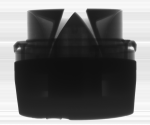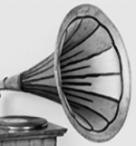I am rather new at this horn thing. Today the compression driver I bought - a JBL 2445J - arrived. I have never seen one of these before. It's supposed to weigh 32lbs. but, my God, if feels as if it weighs 100! Why does it need to be heavier than a typical 18" woofer? There are lots of tweeters that can do the job that weigh so much less; why does a compresssion driver need to be so heavy? In other words, why does it need such a massive magnet? And how should this be supported? I certainly am not going to let it just hang there supported only by the bolts holding the horn.
Finally, how do you test a compression driver? Just attach an amplifier and let 'er rip? I asked in another post how hard was it to recone a woofer; how hard is it to replace a diaphram? It looks ok but there seems to be a few things around it that probably ought not to be there.





 Reply With Quote
Reply With Quote





 So, after reading the "vbullet" tech note shown by Widget, and doing the math on something changing direction close to 20,000 times a second, the acceleration forces are approaching 100 G ?!?
So, after reading the "vbullet" tech note shown by Widget, and doing the math on something changing direction close to 20,000 times a second, the acceleration forces are approaching 100 G ?!?

